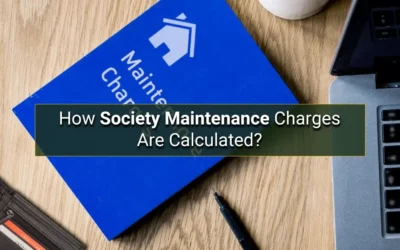A property sale deed may prove how one acquired a piece of land; however, it is not conclusive proof of ownership. That function goes to another understated yet very important document, the property card, which answers the question of what is property card in India by providing real-time updates of ownership and legal status.
Unlike static documents, the property card gets updated with each mutation, mortgage, or legal encumbrance. This is the document that banks ask for before sanctioning loans, lawyers refer to while fighting cases, and municipal bodies look for tax assessments.
If you’re unsure what a property card is or didn’t realize you needed one, this guide will serve as your alarm clock. The reason is that in India, it is not possession that proves ownership in real estate; it is the paperwork. And among urban land papers in India, the property card speaks loudest.
What Are Property Cards and Why Are They Important?
Now, at the very outset of property cards, their meaning will be sought: what are property cards?
A property card is an official plank of evidence of land ownership prepared and maintained by the revenue department or the local municipal authority. It serves as a single-point reference for legal ownership of land in particular town areas. Property cards reflect the contemporary ownership, from the name change-maintaining history, with encumbrance status, tax liability, and survey detail about a particular property.
Simply put, this card contains all possible rights and liabilities of an individual parcel of land, almost acting like a report card for your property.
Read also: Rental Scams in India: How to Avoid Rental Frauds
What Is a Property Card in India?
Property documentation systems in India differ from state to state. However, in the urban areas of India, following digitalization under the Digital India Land Records Modernization Programme (DILRMP), the property card has emerged as a nationally recognized document.
While rural lands are documented using records like the 7/12 extract (Satbara Utara) in Maharashtra or the Record of Rights (RoR) in other states, urban landowners are issued property cards that encapsulate ownership data tied to city survey numbers.
The property card contains:
- Name of the landowner
- City survey number or plot number
- Total land area
- Details of built-up structures (if any)
- Encumbrance or lien information
- Mutation records and dates
- Tax arrears, if any
In legal terms, this card is considered a property ownership document accepted in courts, financial institutions, and during real estate transactions.
Read also: Joint Property Ownership in India: Benefits & Legal Tips
What Is a Property Card in Bangalore?
Now, about city-specific issues, what is a property card in Bangalore?
Karnataka introduced systems for urban land records in almost all places, especially Bangalore, under the Urban Property Ownership Record (UPOR) system. Digitizing all parcels of land in the urban areas, the initiative was mainly launched to create the UPOR. At present, Bangalore is still rolling out UPOR in many parts of the city. Bhoomi, a new portal collecting data for rural areas in Karnataka and a very limited part for urban holdings, is now engaged in the same.
Here’s what property documentation looks like in Bangalore:
- UPOR: Maintains ownership records and digitally stores mutation and transaction history.
- BBMP GIS Portal: Provides visual mapping of properties in Bangalore along with ownership and zoning data.
- Bhoomi Portal: Although predominantly focused on rural areas, some urban data can be accessed.
- Kaveri Online Services: For sale deed, encumbrance certificate, and property registration data.
In other words, the property card in Bangalore is mainly referred to as UPOR, an ongoing digitalization effort that aims to centralize data for urban properties.
Read also: What are CAM Charges? Full Form & Meaning Guide
Importance of Property Cards in India

A property card is not some other bureaucratic piece of paper; it is Serviceable in a Socio/mobile function as a safety net in a high-stakes-high-value asset such as land. That’s why it becomes important:
Legal Sammlung of Legal Ownership
A property card serves as your title and rightful ownership claims of any person to be legally binding on the present owner. In legal proceedings regarding inheritance claims or adjudications by the court, this becomes important for deductions of bank loans.
Mutation History
Each time a transfer, sale, inheritance, or the entry of a mutation is recorded on the property card. So the ownership lineage is easily traced.
Checks Fraud
By simply looking at this encumbrance section, you can quickly check if there is an existing loan on the land. This will save buyers from becoming victims of fraud or double selling.
Tax Dues
It also mentions any tax dues pending, thus ensuring a transparent transaction and saving the buyer from future liabilities.
Easy Transfer
In many cases, authorities ask for a property card to register or subdivide or give any building permissions.
Read also: Mortgaged Property Meaning, Sale, Gift Rules & Legal Steps in India
How to Get a Property Card Online in India?
Digital India is not just a catchphrase anymore. It is changing the way citizens access land data. Here is how to get a property card online, depending on the state:
Step 1: Visit the Official Portal for Land Records
Each state had a designated portal. Some well-known ones include:
- Maharashtra: https://bhulekh.mahabhumi.gov.in
- Karnataka: https://landrecords.karnataka.gov.in
- Gujarat: https://anyror.gujarat.gov.in
- Tamil Nadu: https://eservices.tn.gov.in
Step 2: Click on View Property Card or Equivalent
Some portals have it as RoR, 7/12, Property Extract, or just Property Card.
Step 3: Fill in the Required Details
- Usually, you would have to enter:
- District Name
- Village or Ward
- Taluka
- Survey Number/CTS Number
- Owner’s Name (optional)
Step 4: View or Download
You can either view your property card online or download a digitally signed version for your records or to submit to a bank.
This process is free on most portals; some sites provide a hard copy for a nominal fee.
State-Wise Property Card Advantages
- Maharashtra: Property cards and 7/12 records are now digitally integrated.
- Karnataka: Implementation of UPOR is to make land ownership in Bangalore tamper-proof.
- Madhya Pradesh and Gujarat: A well-integrated system supported by GIS shows visual maps along with ownership information.
- Delhi: DDA has started the digitization of plotted lands and Colony lands.
The online access to property cards has greatly reduced middlemen, corruption, and red tape.
How Many Property Cards Can a Person Have?
A commonly asked question we receive: “How many property cards exist for one person?”
The answer depends on how many different properties, identified by distinct survey numbers or CTS numbers, a person owns. One individual property card is issued for each land parcel. For instance:
If you own 1 plot in Pune and 2 flats in Bangalore, this means three property cards will be issued.
Even if you have multiple units in the same building (registered separately), each will receive individual cards.
Therefore, the number of property cards = the number of distinct properties registered under your name.
Read also: RERA Payment Schedule Explained: Legal and Financial Guide
Property Card vs Other Property Documents
| Document Type | Purpose | Scope |
| Property Card | Shows current ownership and encumbrances | Urban |
| 7/12 Extract | Details of land ownership, crop info, and mutation | Rural (Maharashtra) |
| RoR (Record of Rights) | Lists the ownership and legal status of land | Pan-India |
| Sale Deed | Contractual proof of property transfer | Pan-India |
| Encumbrance Certificate | Certifies no legal dues on property | Pan-India |
The property card is one document that is quite dynamic in nature: it does not remain static and invariably updates itself with mutation changes and conveys real-time legal standing.
Wrapping Up
A property card is much more than a bureaucratic nicety; it is a property ownership document that legally protects you and also simplifies real estate transactions. The whole process, from viewing property cards online to downloading certified digital versions, is witnessing a transformation in the Indian real estate ecosystem itself as it becomes more transparent, accessible, and secure.
Whether you’re a seasoned investor, a greenhorn buyer, or someone seeking to verify an ancestral land, having the knowledge of what is property card is in India and how to get a property card online is a must.
It’s the best time to ensure that your property card is aptly updated, verified, and kept safe because cities like Bangalore are digitalizing all their land records.




